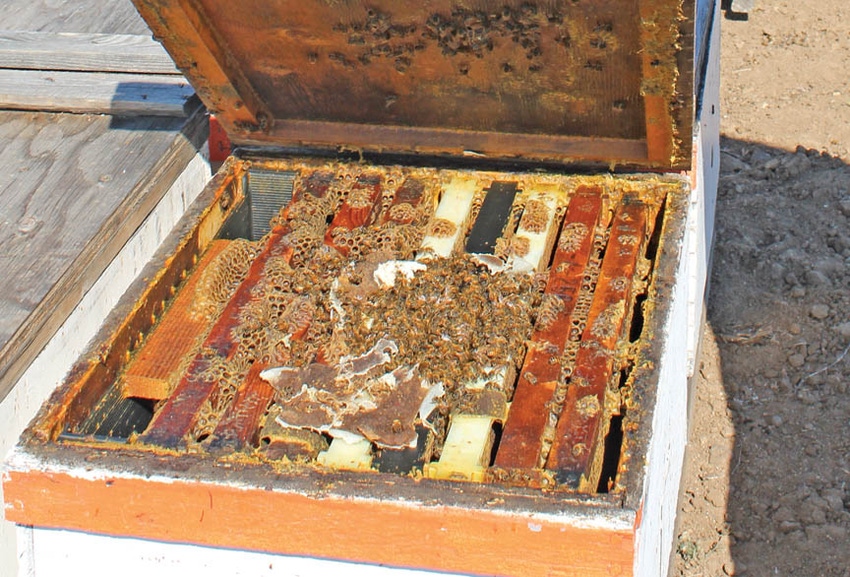
“If the bee disappeared off the surface of the globe then man would only have four years of life left. No more bees, no more pollination, no more plants, no more animals, no more man.” – Albert Einstein
In two unrelated, independent studies released this month, researchers have taken a giant step forward in shedding new light on the causes of honey bee colony collapse disorder (CCD), an environmental threat first discovered shortly after the turn of the century that poses a serious threat to nature's ecological balance required to sustain plant and animal life.
Study results released this week involving cooperative research in both the U.S. and China has identified a viral pathogen that typically infects plants but has also been detected in honey bees, a condition most likely contributing to CCD. That pathogen, commonly known as Tobacco Ringspot Virus (TRSV), causes systemic infection in bees and results in colony collapse over time.
If you are enjoying reading this article, please check out Southwest Farm Press Daily and receive the latest news right to your inbox.
In the other study, released Jan. 20 (2014) at the National Bee Conference in London, researchers indicated that not only three neonicotinoid pesticides adversely affect bee colonies as previously known, but that prolonged exposure to a pyrethroid pesticide used on flowering crops contributes to the reduced size of individual bees produced by a colony, which in turn reduces pollination and the overall number of bees produced.
See what the agriculture industry is doing to address honey bee colony collapse disorder.
Researchers sounded the alarm nearly 10 years ago when the global population of honey bees began to mysteriously decline. In 2005 the Agriculture and Consumer Protection Department of the Food and Agriculture Organization of the United Nations estimated the worth of global crops by honeybee pollination was close to $200 billion, so the steady decline in bee population quickly became a serious and developing crisis worldwide.
By the 2008, the radical reduction of honey bee populations had developed into a global epidemic, negatively affecting ecosystems in a multitude of environments. Across North America, domestic honey bee populations declined by 30 to 90 percent within individual colonies, and similar numbers were reported by Canada, Mexico and across much of the European Union (EU).
In recent years the EU banned used of the three neonicotinoid pesticides in an attempt to slow or counter the decline in bee populations. But new research indicates that move may have fallen short of providing adequate safeguards for the re-propagation of bee colonies.
Continuing research in declining bee population has uncovered a multitude of possible contributing factors, including the wide use of pesticides related to agriculture, Varroa mites, Nosema, and now TRSV.
Virus is a factor
Results of a bi-national effort were released and published this week in mBio, the online open-access journal of the American Society for Microbiology. Authors of the study included Yan Ping Chen from the U.S. Department of Agriculture's Agricultural Research Service (ARS) laboratory in Beltsville, Maryland, and lead author Ji Lian Li, at the Chinese Academy of Agricultural Science in Beijing.
Chen said routine screening of bees for frequent and rare viruses resulted in the detection of TRSV and prompted an investigation into whether the plant-infecting virus could also cause systemic infection in the bees.
"The results of our study provide the first evidence that honeybees exposed to virus-contaminated pollen can also be infected and that the infection becomes widespread in their bodies," Li said in the study. "We already know that honeybees, Apis melllifera, can transmit TRSV when they move from flower to flower, likely spreading the virus from one plant to another."
TRSV was also detected inside the bodies of Varroa mites, a vampire parasite that transmits viruses between bees while feeding on their blood. According to the study, the infected queen in a colony lays infected eggs, and this convinced scientists that TRSV could also be transmitted vertically to her offspring.
The study concluded that the increasing prevalence of TRSV in conjunction with other bee viruses is associated with a gradual decline of host populations and supports the view that viral infections have a significant negative impact on colony survival.
The other study, released by researchers at Royal Holloway University in London, was published last week in the Journal of Applied Ecology. Research team members included Gemma Baron, Dr. Nigel Raine and Professor Mark Brown, all from the School of Biological Sciences at Royal Holloway.
The study involved tracking how bee colonies grew over an extended period of time, recording their size and weight as well as monitoring the number of queens and worker bees produced by the colony.
"We already know that larger bumblebees are more effective at foraging. Our result, revealing that this pesticide causes bees to hatch out at a smaller size, is of concern as the size of workers produced in the field is likely to be a key component of colony success, with smaller bees being less efficient at collecting nectar and pollen from flowers," noted research lead Gemma Baron in the study summary.
Also of interest:
Stress may contribute to poor bee health
About the Author(s)
You May Also Like




